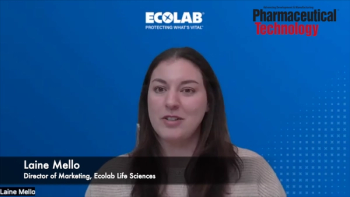
FDA Publishes More Than 200 Complete Response Letters
FDA says the move boosts regulatory transparency, offering insights into common approval barriers in drug applications and reducing guesswork.
On July 10, 2025, FDA made public more than 200 previously confidential decision letters—known as Complete Response Letters (CRLs)—issued between 2020 and 2024 for drug and biologic applications that were not approved during their initial review cycle (1). These letters provide detailed reasons why an application could not be approved in its submitted form, including issues related to safety, efficacy, manufacturing deficiencies, and bioequivalence (1). "This action is a double-edged sword," said Biopharm International Editorial Advisory Board Member Steven Walfish, President of Statistical Outsourcing Services. "The transparency should provide consumers and the capital markets with long overdue information to why drugs applications did not meet the threshold for approval. This information will help the industry to understand the current thinking of the agency on certain aspects of the clinical and CMC process. On the other hand, it opens the FDA up to scrutiny that they are not applying the standards in an even-handed manner.”
Unprecedented Move
Previously, the FDA had not routinely shared CRLs publicly. Sponsors often disclosed minimal information when announcing a non-approval. A 2015 cross-sectional study published in BMJ found that drug developers omitted around 85% of safety and efficacy concerns noted by the FDA in their public statements (2). Moreover, when the FDA recommended a new clinical trial, that fact was left out of sponsor communications in approximately 40% of cases.
The newly released letters are available through the openFDA platform and were redacted to remove trade secrets or confidential commercial information (1). According to the agency, only CRLs tied to subsequently approved products were included in this initial batch. The FDA is reviewing its archives and has indicated it may release additional letters in the future as part of a broader transparency initiative (1,3).
Mixed Responses
FDA Commissioner Marty Makary, MD, MPH, stated that the move is intended to reduce the “guessing game” for drug developers and investors and help foster more predictable pathways for therapeutic approvals (1).
Critics of the previous system have long pointed to the lack of transparency as a factor in repeated regulatory missteps across the industry. The inability to learn from others’ failures has arguably contributed to inefficiencies in clinical development and strategic planning. The publication of CRLs is expected to give companies and investors deeper insight into the agency’s decision-making process and highlight common pitfalls across clinical, manufacturing, and regulatory domains (4).
However, some observers note that the release raises questions about consistency, timing, and scope. For example, it remains unclear whether future CRLs for non-approved applications will be published or whether sponsors will have input into the redaction process. Legal analysts have also flagged the importance of maintaining confidentiality protections while expanding access to regulatory history (5).
While reactions to the policy shift have been mixed, the publication of CRLs represents a notable change in how the FDA communicates its review decisions and could signal a broader evolution in U.S. regulatory transparency standards.
References
- FDA.
FDA Embraces Radical Transparency by Publishing Complete Response Letters . Press Release. July 10, 2025. - Downing N, Ross J, et al.
Describing the Content of FDA Complete Response Letters and How Sponsors Publicly Report Them: Cross Sectional Study . BMJ 2015;350:h2758. - Mason, G.
FDA Releases ‘Initial Batch’ of More Than 200 Drug Rejection Letters . Fierce Biotech. - Halpern L.
FDA Publishes Hundreds of Complete Response Letters from First Half of the Decade . Pharmacy Times. - Hogan Lovells.
FDA’s Creation of Public Database of 200 CRLs Raises Questions . Press Release. July 10, 2025.
Newsletter
Get the essential updates shaping the future of pharma manufacturing and compliance—subscribe today to Pharmaceutical Technology and never miss a breakthrough.




